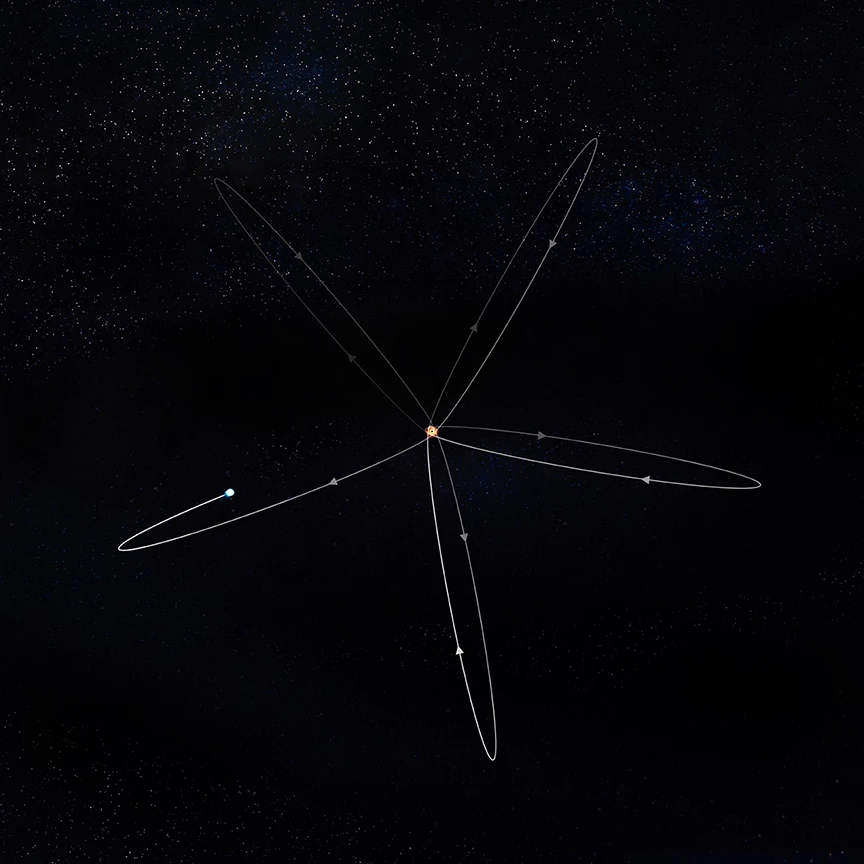Usually, a brush with a black hole marks the end of an object’s journey – after all, even light itself can’t escape the intense gravity. But in the galaxy GSN 069, a star has managed to survive a close encounter with a black hole, ending up in orbit around it. It didn’t come off unscathed though – the black hole pulled enough material off the star to turn it from a red giant into a white dwarf, and in about a trillion years, it may actually become a planet.
Black holes destroy stars fairly regularly, creating pretty spectacular light shows. But now for the first time, astronomers have spotted a case where disaster was narrowly avoided, although the encounter means the star is headed for a much more dramatic fate.
According to astronomer Andrew King, the star was a red giant when it first approached the black hole. As it swept past, the eternally-hungry object slurped off the star’s outer hydrogen layers, eventually leaving just a white dwarf behind.
This white dwarf became trapped in an oblong orbit around the black hole. Each lap takes about nine hours, but it stays just out of reach so that it never falls in – at its closest point, the star is still at a distance of about 15 times the radius of the event horizon.

This elliptical orbit isn’t entirely unswayed by the gravity though. Each time, the star is flung away in a slightly different direction, so that the orbital path rotates over time. Over the course of about two days the orbit comes to resemble a spirograph or a rosette.
The story was revealed through X-rays, as seen by NASA’s Chandra X-ray Observatory and ESA’s XMM-Newton. Using these two observatories, King noticed bursts of X-rays in GSN 069 that flared up every nine hours like clockwork. He proposes that we see those X-ray bursts when the star is at the closest point in its orbit to the black hole, which continues to strip layers of material off of it.
But the most fascinating part of the story is yet to come. King suggests that the star isn’t fated to be swallowed up by the black hole, as you might expect. Instead, as it loses mass the star will swell up in size, and its orbit will become more circular. Eventually the white dwarf will spiral away from the black hole, and in the long run it could even lose enough mass to become a Jupiter-sized planet.
We do mean “the long run” when we say that, though. King calculates that if this occurs it won’t be for about a trillion years. For reference, that’s more than 70 times longer than the universe has currently existed for, and there’s no guarantee that it will even survive that long.
The research was published in the journal Monthly Notices of the Royal Astronomical Society. An animation of the star’s orbit can be seen in the video below.
Source: Chandra





